Vintage Mopeds have a special place in my heart, well actually in my life. I do devote a large amount of time to them even if I’m just looking at photos of other people’s mopeds online. I’d like to give my recommendation for what to do when you acquire a moped. This would be my advice for new moped owners.
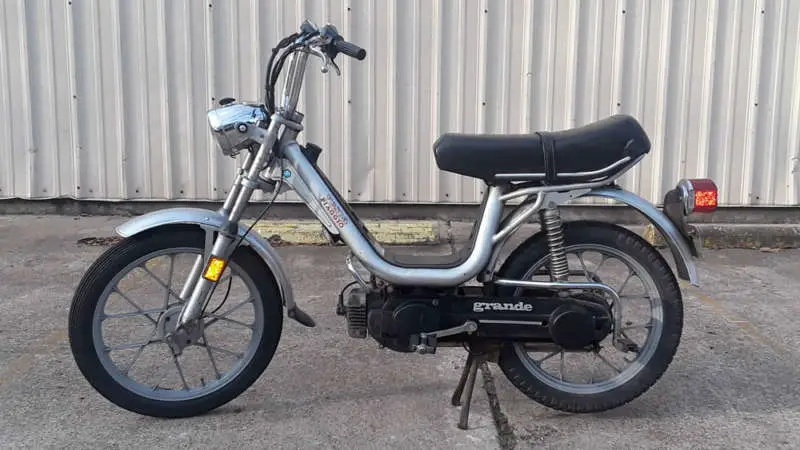
You just got a vintage moped.
Congrats on finding something unique even if it’s common for those of us in the moped community. Welcome to the hobby as well. If you are lucky enough, you purchased or were given a running moped and you can skip to “It’s running now what’s next?” If you have gotten a moped that isn’t running then below are my recommendations for where to start with your new project.
Before we get started, you should take time to think about what you would like to achieve with this moped. Mopeds are recreational. If you are looking for a daily commuter it is possible to do this with a moped depending on certain variables. The area you live in and the distance you will be commuting will play a role in how enjoyable it will be to commute daily with your vintage mopeds. You will need to have some level of patience and problem-solving skills. Even the most dependable of mopeds will tend to fail at some point. If the idea of repairs or roadside repairs is something you are not interested in, then I would recommend not using your moped as a daily commuter.
Vintage Mopeds are great as recreational vehicles. If you are taking them camping, on a short ride, or to a moped rally they are great for this. The reason I say that, is that in most of these cases you have probably transported your moped with you, and if it breaks down it is not your only source of transportation. Hopefully, it never breaks down and you get to enjoy many rides, and if it does, hopefully, you have someone nearby to pick you up.
A few more questions about your vintage mopeds.
Some other things to think about before starting.
- Do you plan to keep this moped forever? Are you just in love with mopeds and specifically this one you just got?
- Are you looking for something to just tinker with? Something to learn some basic mechanics?
- If it becomes overwhelming, are you ok with cutting your losses?
Let’s get started with vintage mopeds
Find out what a realistic resale value is for your moped, both running and not. Set a budget for yourself. Even though fully restoring a moped is less than many other vintage vehicles, you can spend a few hundred or thousands and not have a running moped.
Let’s get the moped running first. Most non-running vintage mopeds can be due to one or a combination of four key requirements fuel, air, compression, or spark.
Compression and is the engine seized.
I’m going to start with compression first. This is because it might tell us two things about your moped engine. One thing we will learn is if the engine is seized. Remove the spark plug and turn the engine over. If the piston moves freely up and down, then the engine isn’t seized or frozen. Next, place your finger over the spark plug hole and turn over the engine. The compression should blowback against your finger. This is not the best way to test for the right compression but just to test for some compression.
If you don’t feel any air pressure against your finger or if the piston doesn’t move because the engine is seized, then we should stop here. If the engine is seized, you will need a complete engine rebuild as my recommendation. You might get away with replacing the piston, rings, and cylinder but more likely other internal parts might be damaged like seals and bearings. Decide if you want to put the effort into a rebuild. Is it in your budget? Are the parts needed for a rebuild available? This would all be a factor in deciding if it’s time to move on from this project or continue.
If you have some compression let’s move on to the next item to test.
Replace the spark plug.
Do some research and look up the recommended replacement spark plug for your make and model moped. It might be best to look up the recommended spark plug for your engine instead of the make and model of the moped.
With a new spark plug, connect it to the connector boot and place it against the fins of the cylinder. Kick over the engine however this is done depending on your moped model. We are testing for a spark here. If you have a spark with your new spark plug, then we are good to move on to the next task.
If you do not have a spark, let’s stop here and decide how much effort you want to put in. Troubleshooting a spark issue can be easy or be difficult to find the cause. If it’s more than you want to take on, I recommend cutting your losses here. You can try to sell the moped give it away or do whatever you choose to do with it. I would then say if you still want to have a moped, take that new spark plug with you when you find another moped to test that moped for spark.
Let it breathe!
Engines need air to mix with fuel to create a “mixture” for the spark to ignite. This mixture is partially done through/with the carburetor. Remove the carburetor because we will be cleaning, rebuilding, or replacing it.
Clean the carburetor first. I made a video and article for doing this with an SHA carburetor from a Vespa moped. Most vintage mopeds carburetors are similar and you should be able to follow the steps from that video or article. Inspect the parts of the carburetor, and decide if you need to rebuild the carburetor. Lastly, if you do not want to clean or rebuild the carburetor, you will need to replace it with a quality carb, not a cheap clone. Carburetors use a “jet” to deliver the proper amount of fuel to the engine. If replacing your carb, you will need to know what jet is recommended for your engine. I would look at what the current carburetor jet number and order a new jet of that same size/number.
Fuel.
Now we are almost ready to try and fire up the moped. Disconnect the fuel line from the gas tank to the carburetor. Pour a little bit of premix gas into the tank, about a cup should do. Turn on or open the fuel valve from the gas tank and see if gas is flowing. The gas tank might be dirty and clogging the fuel valve also known as a petcock. Remove the fuel valve and turn it to the on or open position and blow through it. We are checking to see if the valve is good or if it is clogged up.
If the tank is dirty with some debris, you should take some time to clean out the tank by at least filling it up with gas and letting it sit overnight then drain it the next day. If the petcock is clogged, I would replace it with a new one. Replace the old fuel line, as well as these, tend to rot out over time.
Let’s try to start it.
Now that we have fuel flowing, connect the fuel line to the clean carburetor. Pour about a cup or two of premix fuel into the tank. Make sure the spark plug is screwed into the engine, do not over tighten it as you can damage the engine. Just snug enough, don’t put your whole weight into tightening the spark plug. Connect the spark plug boot connector. Engage the “choke” on the carburetor and try to start the moped.
If your moped will not turn on after trying various times, you may have a timing issue would be my first guess. Most times, with a new carburetor, fuel, spark plug, and good compression a moped will start. If not a timing issue, my other guess could be an air leak from a bad seal or gaskets. Or low compression due to worn-out or broken piston rings.
Again, here you need to decide if you want to put the time, effort, and money into troubleshooting and repairing the problem.
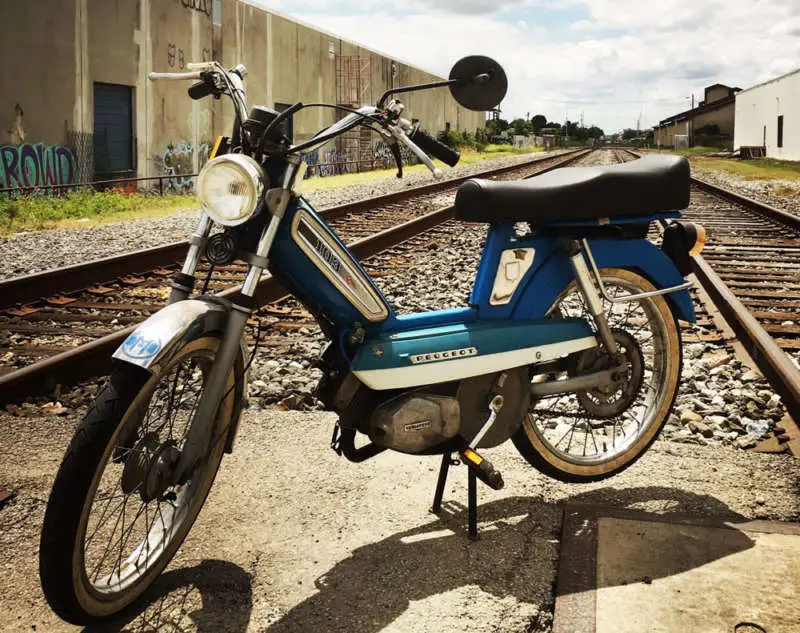
It’s running now what’s next?
Congrats, you got a running moped! You might need to tune or adjust the carburetor so it will idle. Before you take it for a ride, inspect the tires. Air them up, make sure they hold air, and not leak air out. Inspect the tire for dry rotting.
If the tires hold air, take the moped for a slow ride to test the brakes. You should test braking with the front and back alone, then together. This might be controversial, and I don’t want to be blamed for anything that might go wrong if YOU decide to ride the moped as is with used inner tubes, tires, and brakes. So the next thing you should spend money on is new brake pads, inner tubes, and tires for your moped. Especially if you plan to go on long rides.
After replacing all the above, I would enjoy the moped for as long as possible even if it is slow. Do not rush into trying to make it faster or modify the appearance.
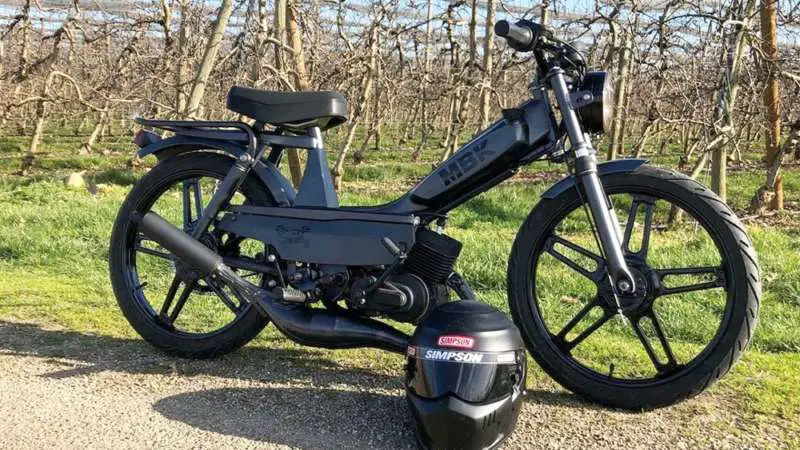
I love mopeds, I want custom and fast vintage mopeds.
If you are bitten by the moped bug and want to build a custom moped, then go for it. Start slow when modifying and change one variable or item at a time. If you replace the exhaust, you will need to increase the jet size on your carburetor. If you increase the displacement with a bigger piston and cylinder kit, you may need to also upgrade the carburetor and exhaust. All things you should consider.
I would recommend a budget for modifications as well. Remember that a moped for the most part is not an “investment”. If you decide to sell it, do not set your expectations high for resale value. Read about what your moped is worth to get a better idea of why a moped shouldn’t be thought of as an investment.
Thanks for reading, please share this article with all your friends.


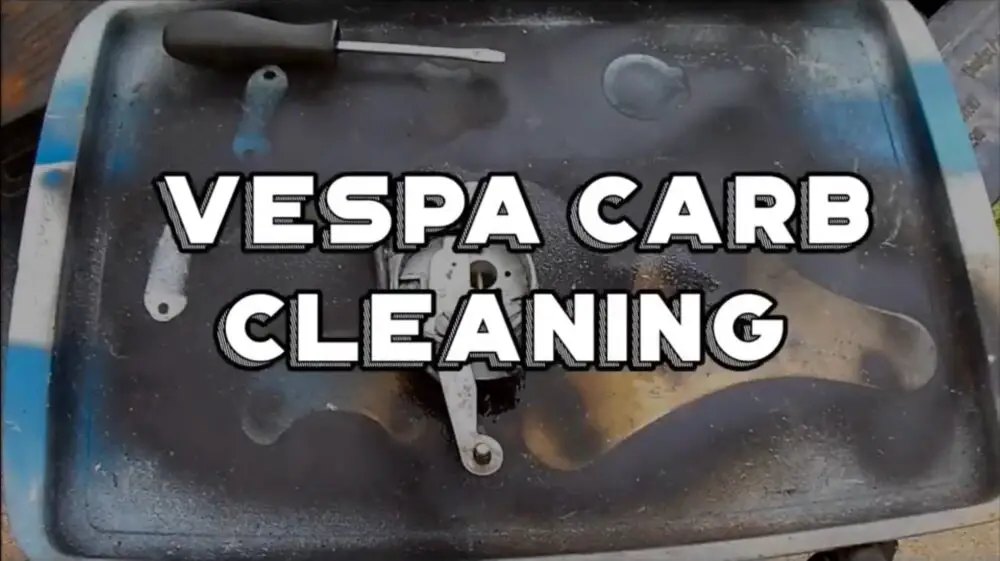
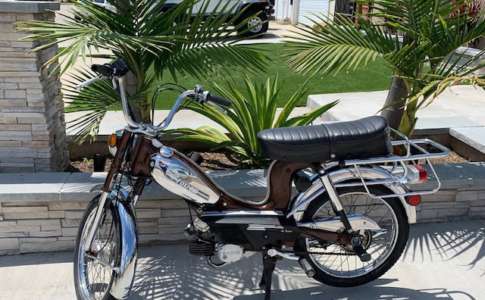
No comments